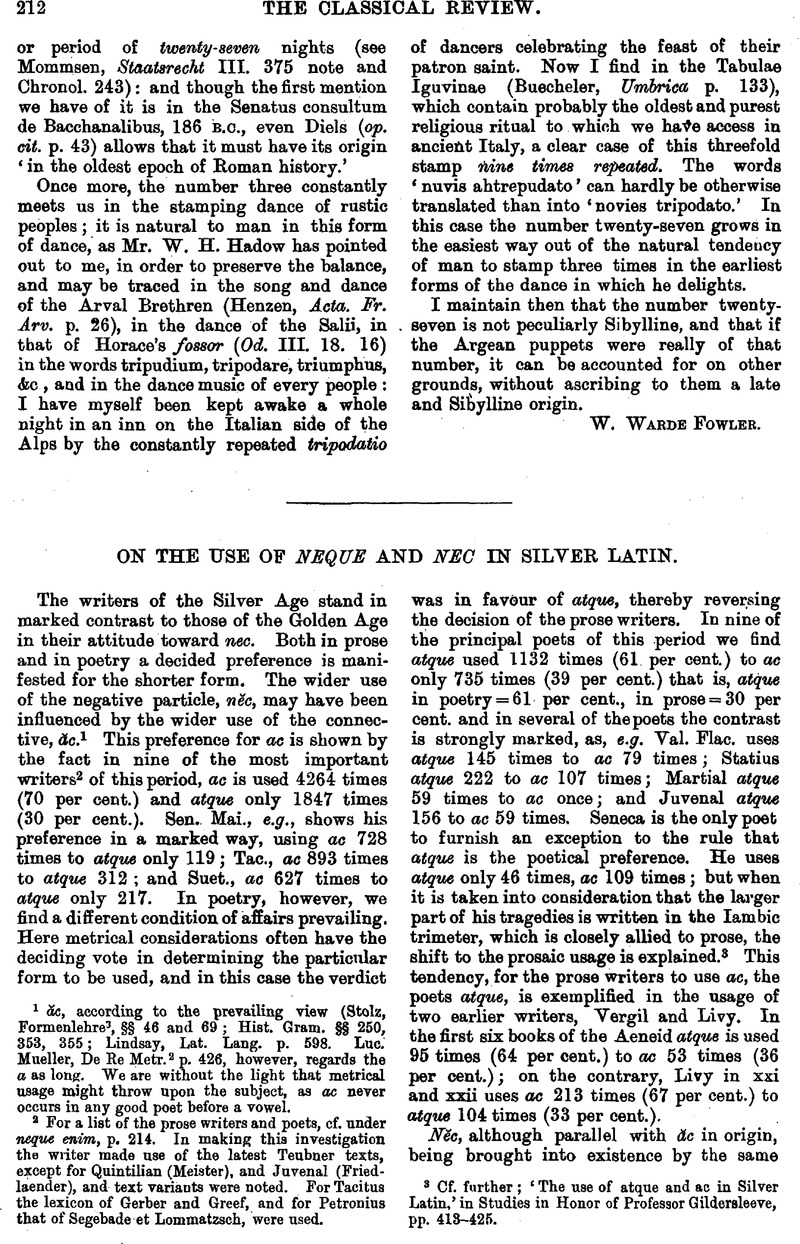No CrossRef data available.
Article contents
On the Use of Neque and Nec in Silver Latin
Published online by Cambridge University Press: 27 October 2009
Abstract

- Type
- Original Contributions
- Information
- Copyright
- Copyright © The Classical Association 1902
References
page 212 note 1 ǎe, according to the prevailing view (Stolz, Formenlehre3, §§ 46 and 69; Hist. Gram. §§ 250, 353, 355; Lindsay, Lat. Lang. p. 598. Luc. Mueller, De Re Metr.2 p. 426, however, regards the a as long. We are without the light that metrical usage might throw upon the subject, as ac never occurs in any good poet before a vowel.
page 212 note 2 For a list of the prose writers and poets, cf. under neque enim, p. 214. In making this investigation the writer made use of the latest Teubner texts, except for Quintilian (Meister), and Juvenal (Friedlaender), and text variants were noted. For Tacitus the lexicon of Gerber and Greef, and for Petronius that of Segebade et Lommatzsch, were used.
page 212 note 3 Cf. further; ‘The use of atque and ac in Silver Latin,’ in Studies in Honor of Professor Gildersleeve, pp. 413–425.
page 213 note 1 It may be added, by way of explanation that while nec could easily arise before vowels from nequ(e), ac, owing to the presence of the t before the -que could never in this situation get further than acc (as, e.g. atqu(e) illum, ate, acc). This explains why nec might be used before vowels, while ac could not. (Frotecher (Quint, p. 262), however, would have it that it is the sound that settles the matter: ‘Quis eat enim, quin sentiat, AC ANOUSTA et NEC ANGTTSTA quantum sono differant. Meo certe sensu posterius altero tanto mollius iudicandum videtur.’ This view is hardly correct.
page 213 note 2 Consonants were also similarly treated; Quint, says E duobus 5 times to ex 8 times; with contrario, E 7 times (Neue Formenlehre, omits 7, 4, 9 and 10, 1, 19, and cites 5, 14, 4 where Halm and Meister read vel contrario); with contrario Seneca phil. uses E 11 times, but ex 4 times.
page 213 note 3 Here, however, Dziatzko reads: neque enim.
page 213 note 4 It may be noted here that Livy, in the 3rd Decade uses neque enim 19 times to nee enim 6 times.
page 214 note 1 Draeger cites Apul. Met. 3, 8 for nec enim. To this add 5,19:29, and 31.
page 214 note 2 nec …. quidem, a very rare usage, was noticed in Quint. Decl. 831, 8 and 335, 11 (R).




